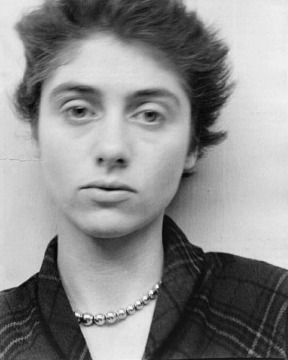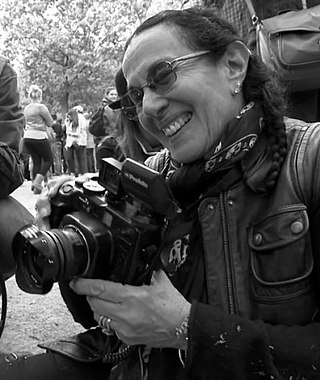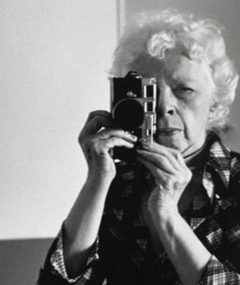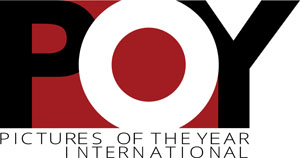
Dorothea Lange was an American documentary photographer and photojournalist, best known for her Depression-era work for the Farm Security Administration (FSA). Lange's photographs influenced the development of documentary photography and humanized the consequences of the Great Depression.

Diane Arbus was an American photographer. She photographed a wide range of subjects including strippers, carnival performers, nudists, people with dwarfism, children, mothers, couples, elderly people, and middle-class families. She photographed her subjects in familiar settings: their homes, on the street, in the workplace, in the park. "She is noted for expanding notions of acceptable subject matter and violates canons of the appropriate distance between photographer and subject. By befriending, not objectifying her subjects, she was able to capture in her work a rare psychological intensity." In his 2003 New York Times Magazine article, "Arbus Reconsidered", Arthur Lubow states, "She was fascinated by people who were visibly creating their own identities—cross-dressers, nudists, sideshow performers, tattooed men, the nouveaux riches, the movie-star fans—and by those who were trapped in a uniform that no longer provided any security or comfort." Michael Kimmelman writes in his review of the exhibition Diane Arbus Revelations, that her work "transformed the art of photography ". Arbus's imagery helped to normalize marginalized groups and highlight the importance of proper representation of all people.

Susan Meiselas is an American documentary photographer. She has been associated with Magnum Photos since 1976 and been a full member since 1980. Currently she is the President of the Magnum Foundation. She is best known for her 1970s photographs of war-torn Nicaragua and American carnival strippers.

Sally Mann is an American photographer known for making large format black and white photographs of people and places in her immediate surroundings: her children, husband, and rural landscapes, as well as self-portraits.

Ruth Bernhard was a German-born American photographer.

Danny Lyon is an American photographer and filmmaker.

Mary Ellen Mark was an American photographer known for her photojournalism, documentary photography, portraiture, and advertising photography. She photographed people who were "away from mainstream society and toward its more interesting, often troubled fringes".

Esther Bubley was an American photographer who specialized in expressive photos of ordinary people in everyday lives. She worked for several agencies of the American government and her work also featured in several news and photographic magazines.

Philip Jones Griffiths was a Welsh photojournalist known for his coverage of the Vietnam War.

Lisette Model was an Austrian-born American photographer primarily known for the frank humanism of her street photography.

Pictures of the Year International (POYi) is a professional development program for visual journalists run on a non-profit basis by the Missouri School of Journalism's Donald W. Reynolds Journalism Institute. POYi began as an annual competition for photojournalism in 1944. POYi promotes the work of documentary photographers and magazine, newspaper, and freelance photojournalists.

Eugene Richards is an American documentary photographer living in Brooklyn, New York. He has published many books of photography and has been a member of Magnum Photos and of VII Photo Agency. He was born in Dorchester, Massachusetts.
Kathy Ryan is the Director of Photography for The New York Times Magazine. She has worked at The New York Times Magazine since 1987.
Renée C. Byer (1958) was born in Yonkers, New York.

Fine art nude photography is a genre of fine-art photography which depicts the nude human body with an emphasis on form, composition, emotional content, and other aesthetic qualities. The nude has been a prominent subject of photography since its invention, and played an important role in establishing photography as a fine art medium. The distinction between fine art photography and other subgenres is not absolute, but there are certain defining characteristics.
Erin Grace Trieb is an American photojournalist. Trieb focuses on international social issues and is currently based in Istanbul, Turkey.

Deborah Lou Turbeville was an American fashion photographer. Although she started out as a fashion editor at Harper's Bazaar, she became a photographer in the 1970s.
Yolanda Cuomo is an American artist, educator, and art director known for her collaborations and intuitive design work with visual and performing artists, including Richard Avedon, the estate of Diane Arbus, Paul Simon, Laurie Anderson, Twyla Tharp, Laurie Simmons, Donna Ferrato, Larry Fink, Philip-Lorca diCorcia, Sylvia Plachy, Gilles Peress, John Cohen, Paolo Pellegrin, Peter van Agtmael, Andrew Moore, and the estate of Al Taylor. Since the mid-1980s Cuomo has often collaborated on books and exhibitions with the Magnum Photos agency and Aperture.
Marilyn Nance, also known as Soulsista, is an American multimedia artist known for work focusing on exploring human connections, African-American spirituality, and the use of technology in storytelling.
Yagazie Emezi is a Nigerian artist and self-taught independent photojournalist based in Lagos, Nigeria.















